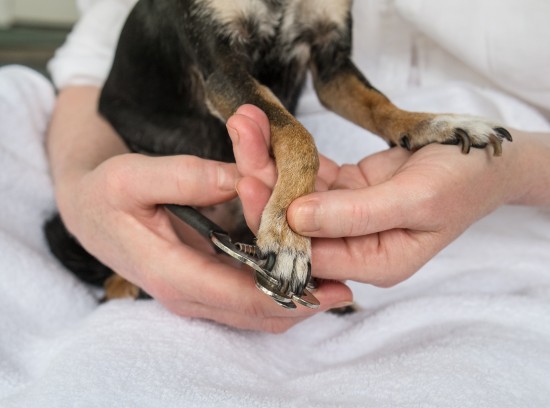
‘Cat Allergy Strikes Again’
That is probably what the papers will say if I don’t make it due to my cat allergies. My allergy to my cat Manja appeared out of the blue. I was completely fine for the first two years from acquiring my cat before the allergy hit me like a ton of bricks.
These were the symptoms that I encountered:
A nose that leaked 24/7
Coughing fits that could terrify kids and some adults
An elephant seated on my chest
Teary eyes that could rival my leaky nose
My allergic reactions can last from a couple of days to a couple of weeks. The lengthiest one I had was close to three months which left me knocked out.
Are You Really Allergic To Your Cat?
If you are someone who has a sensitive nose or cardiovascular system, a dirty surrounding can set off an allergic attack. A way you can establish if it’s really your cat or plain dust is to visit an Allergist. The Allergist will be able to identify the cause of allergy by running some medical tests. It can get pricey though.
How I knew it’s my cat and not dust was when I went on a long holiday vacation for two weeks and did not experience one allergic attack. The second I got back home, my nose started to misbehave.
When you are allergic to your cat, it does not mean it’s the fur which is inducing it. There are two allergens that are responsible for this allergy.
1. FEL D-1
This basically means your cat’s saliva. If you want to be more precise it’s the protein that is in your cat’s saliva. Cats can use four to five hours a day licking and grooming themselves. They lick almost every reachable part of their body. Due to a cat’s grooming habits, a large amount of saliva is passed on tho their fur. Furthermore FEL D-1 stays in the air so even if you not near your cat, you are breathing in this allergen.
2. Dander
Dander is very tiny pieces of your cat’s skin. Much to the surprise of many owners, cats have skin beneath all that thick fur. The oil on the skin helps to keep the fur nice and soft. Like FEL D-1, it’s invisible to the naked eye and likes to stick to objects around your home.
Ways To Reduce Your Cat Allergy
Like all allergies, there are way in which you can minimize the symptoms or exposure to the allergens.
1. Your sleeping area is off limits
Oh boy. I’m so guilty of this and I’m confident several of you cat allergy sufferers are too. The last thing you want is your cat leaving dander and FEL-D1 all around your sheets, pillow and blanket. You devote close to eight hours daily resting. That means eight hours of getting all those allergens. That can wreck your respiratory system over the long run.
Stop encouraging your cat to sleep with you immediately. Despite all the scratching at your bedroom door, pitiful meows and ‘I don’t like to sleep alone’ kitty stares, keep on being firm at all cost. Go to bed with a pair of ear plugs on. Also do yourself a favor and get some new ‘bedware’.
Do not let your cat into the bedroom until you are sure you can minimize allergen deposits in your room.
2. Get a good air filter
As dander and FEL-D1 is capable of becoming airborne, you will require an air filter to get rid off it from the air that you breathe when you’re at home. I would highly recommend a HEPA (High Efficiency Particulate Air) filter. This filter is good enough to remove microscopic allergens in the air thus making the air you inhale more refined. The one I’m currently using is the Honeywell 50250 HEPA Air Purifier. It does one heck of a superb job keeping my allergy at bay.
3. Vacuum regularly
Now that we have taken care of the airborne culprits, the next part of the battle is the allergens on the ground and furniture. Get yourself a HEPA Vacuum cleaner that can suck up those allergens off your floorboards. Not only should you vacuum your floor, you should also include your furniture, curtains or anything that is made of fabric. Pay attention to areas of the house where you spend most of the time in, like the living room and bedroom. Two or three times a week is adequate. Don a surgical mask when doing so as well.
4. Wash your hands
Pet and massage your cat as much as you want but make certain to rinse out your hands after. It’s simple to transfer the allergens to your eyes or nose after holding your cat. I have a few hand sanitizers placed around the house as well.
5. Bathe your cat
As clean as those furry rascals can be, they need a good wash from time to time too. I make it a point to wash Manja at least once every three weeks. It can be as common as once a fortnight if I’m getting regular allergic reactions. When you are done bathing your cat, pour some distilled water over it before drying him off. This can help minimize the allergens on your cat.
6. Wipe your cat
If your cat simply hates water to the extend of being violent, don’t worry about it. You can decrease the allergen levels on your cat by giving it a good wipe down a few times a week. Just wet a towel with distilled water and wipe it good from head to tail. You can also use an ant-allergen solution like Allerpet to clean your cat.
7. Neuter your cat
Studies have shown that neutered cats produce less FEL D-1 compared to un-neutered cats. Male cats are likely to generate more allergens than female cats. So if your cat is still not neutered it’s about time you do so. Allergens aside, there are other health reasons as to why neutering your cat is essential.
8. Get medicated
A visit to the doc can help alleviate the symptoms. I have a nasal spray and some antihistamines on standby. It is certainly not a lasting choice but it comes it useful when I want fast relief.
Living In Harmony With Your Cat
I’ve been told many heartbreaking tales of families having to rehome their cat due to the allergy. Just by employing the tips talked about above you can lower the allergens to satisfactory levels. I’ve gone from crazy allergic attacks to just a few sneezing fits once in a blue moon just by practicing the above ways. There are many many allergic cat owners that are living happily with their cats. You can be one of them too!
Jim Conner has been a cat enthusiast ever since he was a kid. There’s something about a cat that just intrigues him. As an active cat volunteer and owner of a number of cats, he has learnt methods on how to keep a cat contented with toys and feed them a nutritious diet. Learn how Jim does it from his site http://Kibbies.com.
 Treating A Split Or Broken Nail In The Dog
Treating A Split
Treating A Split Or Broken Nail In The Dog
Treating A Split
 Tips For Safe Home Cooking For Dogs
Tips For Safe Hom
Tips For Safe Home Cooking For Dogs
Tips For Safe Hom
 Nutrition For The German Shepherd
Nutrition For The
Nutrition For The German Shepherd
Nutrition For The
 How To Cope With Shedding And Dry Skin In Labrador Retrievers
How To Cope With
How To Cope With Shedding And Dry Skin In Labrador Retrievers
How To Cope With
 Phobia Of Dogs - Looking Into Cynophobia
Phobia Of Dogs -
Phobia Of Dogs - Looking Into Cynophobia
Phobia Of Dogs -
Copyright © 2005-2016 Pet Information All Rights Reserved
Contact us: www162date@outlook.com